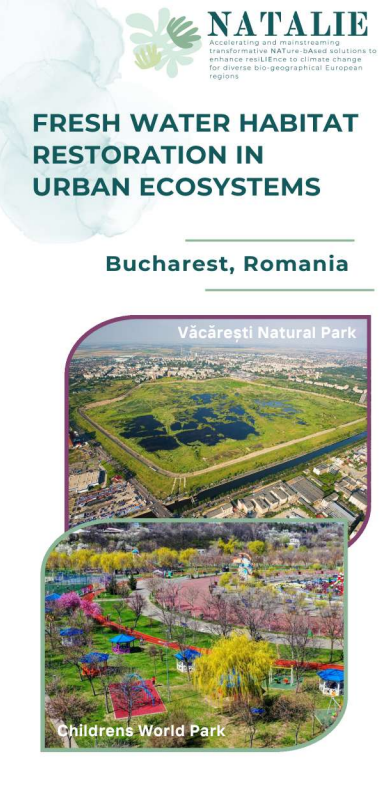FL#2 - Bucharest Children World Park (Romania)
This page is also available in Romanian.

The case study in 5 minutes

Quote


Location
The follower site “Children’s World Park (CWP)” is located in the city of Bucharest, Romania.
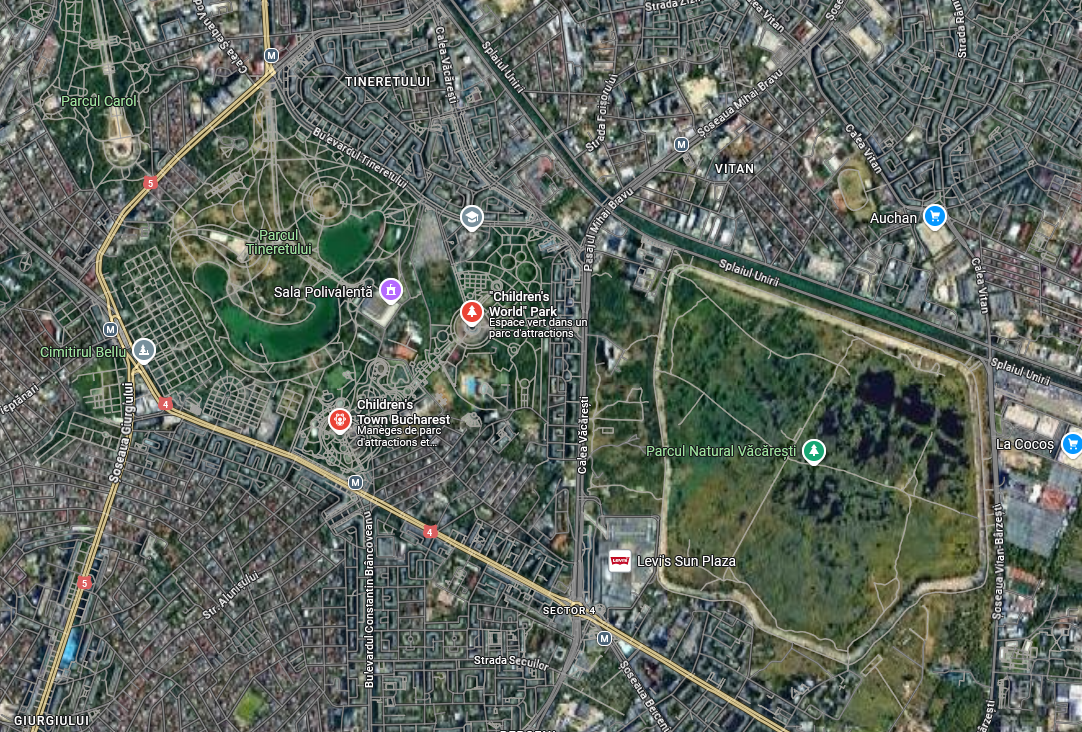
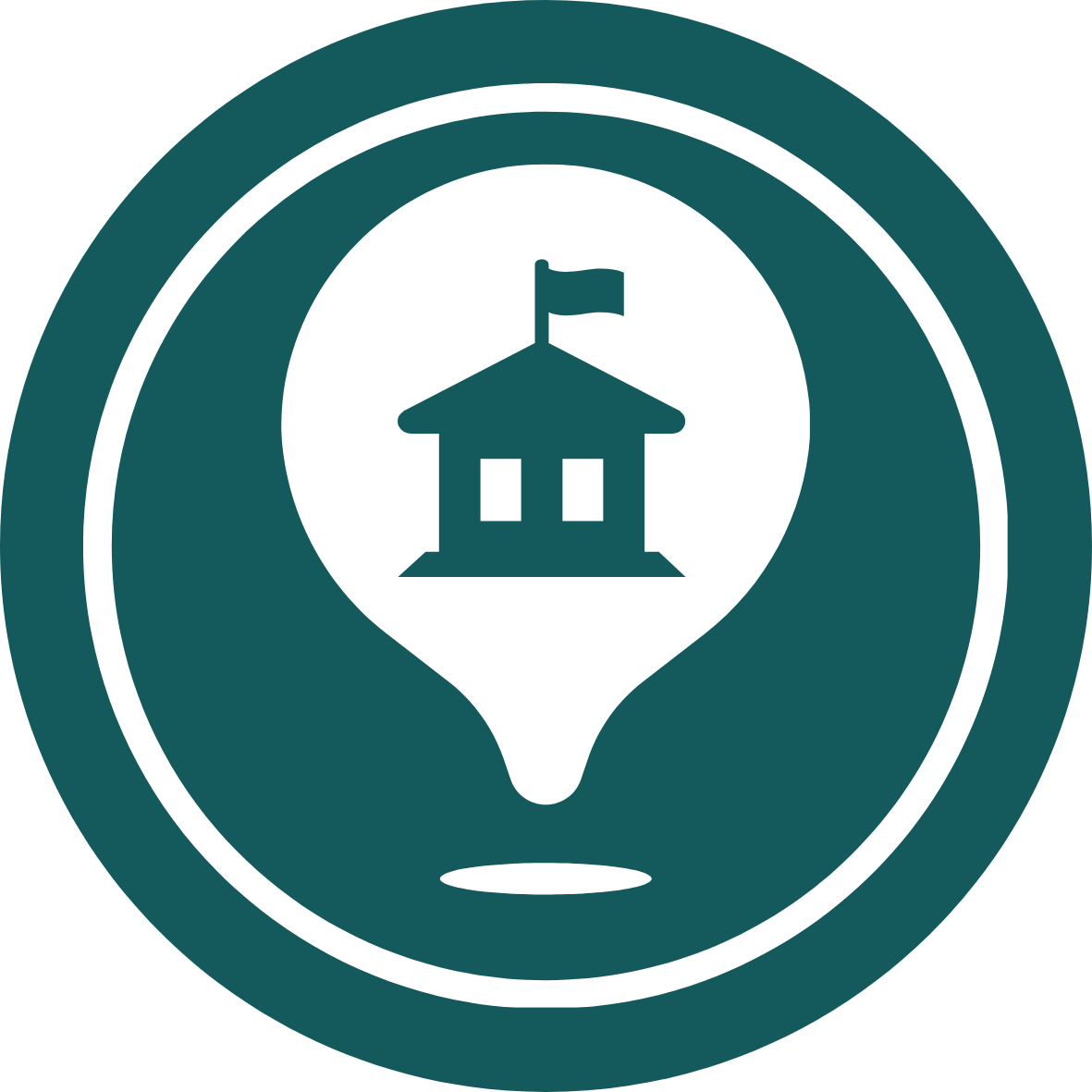
Description of the area
-
Biogeographical region: Continental
-
Landscape context: Urban green corridor within southern Bucharest
-
Site: Children’s World Park (CWP), part of a larger complex including Văcăreşti Natural Park, Tineretului Park, and Orăşelul Copiilor amusement park
-
Area coverage: ~19.3 ha

Climatic Challenges
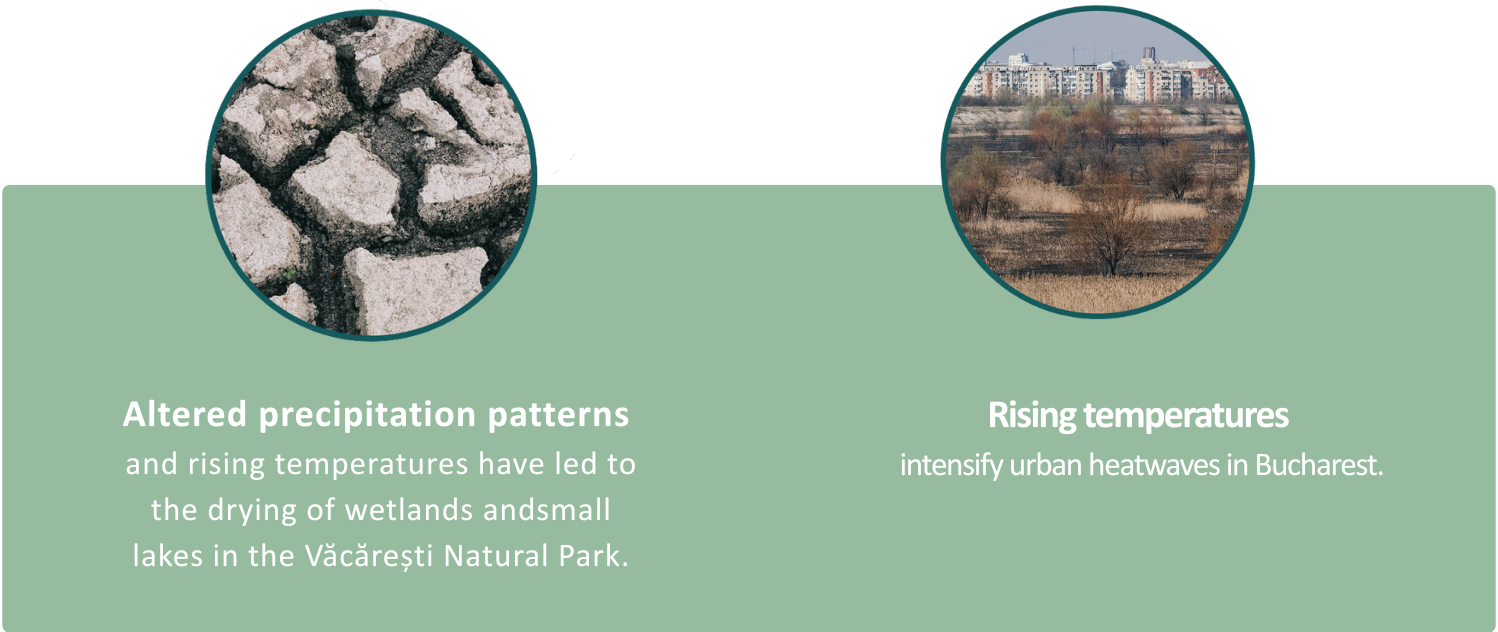

Planned activities
The plan is to transform CWP into a rainwater catchment area to address street flooding during heavy rains, particularly in May and June. This transformation also aims to increase biodiversity and contribute to the climate resilience of the area. Specific Follower Site related activities to be implemented include:
Research and data gathering:
• Surface and groundwater monitoring system implementation,
• Water balance study inside park and neighbourhood areas (to be decided),
• Surface quality analysis,
• Hydrogeological model, inside park and neighbourhood areas.
NBS implementation:
• On the basis of the solution tested by the related demonstration site: applying solutions for rainwater capturing on a pilot area inside the park.
Strategy:
• Developing a strategy for connecting the park to the green-blue infrastructure of the city with focus on the VNP,
• Development a strategy to raise awareness and build community climate resilience,
• Awareness campaigns execution (setting up, running, etc.), stakeholders' involvement and citizen engagement in activities aiming to diminish the climate change effects.

Progress
Field Studies and Layouts
The CS #2 team initiated the necessary studies to support the planned interventions. These included:
- Topographic surveys
- Rain-Water quality analyses
- Soil studies
The first landscape design proposal for the intervention area has been completed. At the same time, stakeholder consultations led to the development of a new concept: a thematic park focused on climate and urban resilience. This future space will feature:
- Informational panels on climate adaptation and nature-based solutions
- Urban meadows with native wildflowers
- Habitat features to support local wildlife
The park aims to inspire and educate visitors while enhancing biodiversity and resilience in the urban environment.
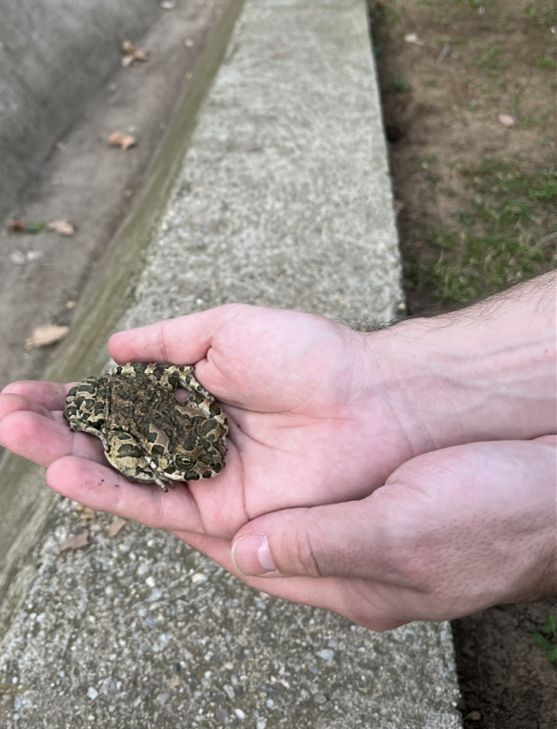
green toad
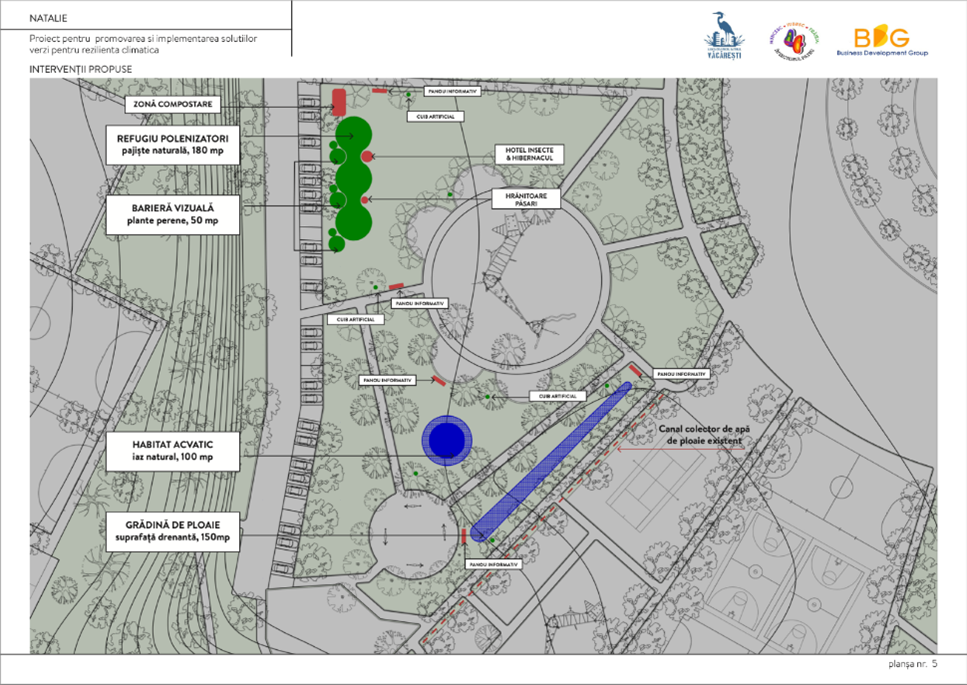
Can urban parks become spaces for developing green, nature-based solutions?
We believe it is essential to adapt the city's green and blue infrastructure to provide ecosystem services that support climate regulation and urban resilience.
That’s why we support the process of re-evaluating parks and green areas, and—together with local communities and stakeholders—co-creating solutions that enhance resilience, ecological regulation, and public awareness.
Get Involved!
Whether you're a resident, expert, educator, or simply passionate about nature in the city, your voice matters. Join us in shaping greener and more resilient urban spaces.

Ambition
Ambition during the project
1.Cooperation with the project partners for designing and implementing NBSs,
2. Improve knowledge of the local community (citizens science, education, awareness) and engage stakeholders,
3. Validate the results and establish a monitoring scheme and adaptive management plan to assess the efficiency of the NBS implemented.
Ambition after the project
1.Establish a foundation for the blue-green corridor (Bucharest), aimed at enhancing biodiversity throughout the city,
2. Utilize innovative rainwater management techniques in the pilot - Nature-Based Solutions (NBS) to enhance the city's water resilience,
3. NBS should mitigate urban heat in the area, contributing to cooling effects during the increasingly frequent summer heatwaves,
4.Provide educational opportunities for schools, community groups, and the general public to learn about ecology, environmental sustainability, and the significance of biodiversity in their locality, fostering long-term community engagement,
5. Well-designed and implemented Nature-Based Solutions (NBSs) can offer cost-effective approaches to urban challenges such as rain/stormwater management and climate change adaptation, potentially resulting in long-term cost savings for the city (help organization for better urban planning).

Questions
“Solutions inspired and supported by nature, which are cost-effective, simultaneously provide environmental, social and economic benefits and help build resilience.” European Commission, 2015

Gallery
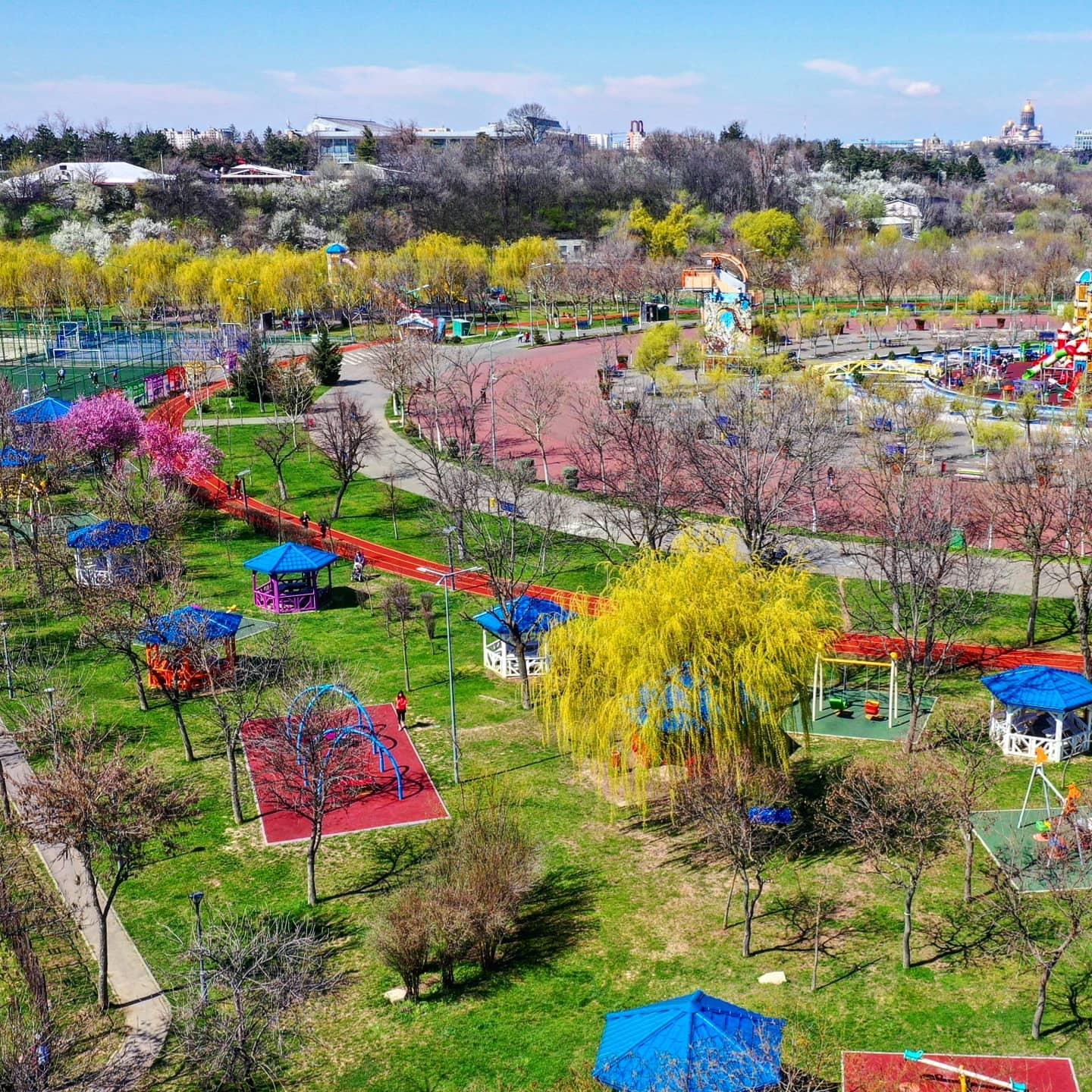

Involved partners



